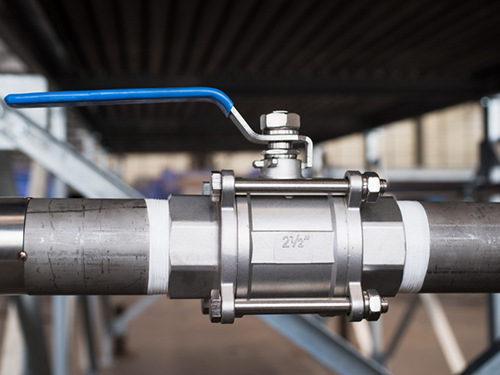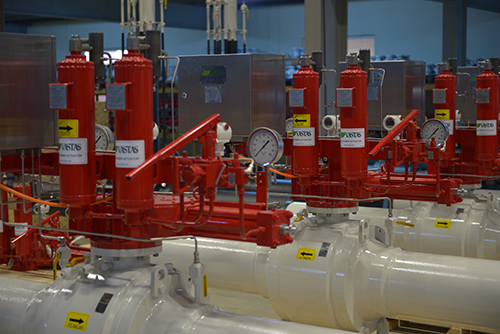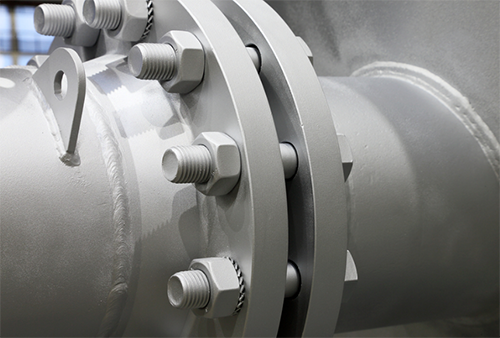Common Methods for Valve Connection to Pipes
Feb 12, 2025
In industrial systems, the installation of valves is a critical step in ensuring the safe and stable operation of pipeline systems. The connection method of valves directly affects their sealing performance, stability, and service life. Therefore, understanding the characteristics, installation requirements, and precautions of various valve connection methods can help operators avoid common issues during installation and ensure the long-term reliable operation of the system.
Threaded connection is a simple and economical method for installing valves, widely used for small-diameter valves. It offers advantages such as easy installation and no need for additional welding equipment, making it suitable for spaces with limited room or where frequent disassembly is required.

During installation, special attention must be paid to the depth of thread engagement. If the threads are screwed in too deeply, the valve seat may be compressed, affecting the fit between the seat and the gate, which could prevent the valve from opening or closing properly. Conversely, insufficient thread engagement may lead to poor sealing at the connection, potentially causing leaks. Additionally, the choice of thread sealing material is crucial. It is recommended to use PTFE tape or sealant, as these materials provide excellent sealing performance and prevent medium leakage. Care must be taken to ensure that the sealing material does not enter the valve's inner cavity, as this could degrade valve performance or cause damage.
Threaded connections are mainly suitable for valves with a nominal diameter of less than 50mm. For smaller valves, threaded connections can meet sealing requirements while reducing installation complexity. Typically, the inlet and outlet ends of small valves are machined with tapered or straight pipe threads to facilitate connection with pipes or fittings.
Since threaded connections may create leakage paths, sealants, sealing tapes, or packing materials are required to fill these gaps and ensure a tight seal. When installing threaded valves, if the valve body material is weldable but there are significant differences in thermal expansion coefficients or large temperature fluctuations, seal welding should be performed to ensure the connection's strength and stability.
Welded connections are typically used in applications requiring high sealing integrity and reliability, especially for pipelines operating under high temperature, high pressure, or harsh conditions. Welded connections provide greater strength and corrosion resistance, making them suitable for demanding applications such as thermal power plants and nuclear engineering.

The installation process for welded connections is relatively complex and requires strict adherence to technical specifications. First, tack welding is performed to ensure proper alignment of the valve's welding ports. Then, formal welding is carried out according to the welding procedure specification, with careful inspection of the weld seams to ensure they are free from defects such as porosity, slag inclusion, or cracks. If necessary, radiographic or ultrasonic testing can be conducted to ensure the welding quality meets standards.
Welded connections are suitable for various pressure and temperature conditions, particularly in extreme temperature or high-pressure environments, where they offer more reliable sealing performance and strength. Compared to flanged connections, welded connections provide better sealing and prevent leaks caused by temperature fluctuations or pipeline vibrations.
However, welded connections are difficult to disassemble and reinstall, making them suitable for long-term operation under harsh conditions or where frequent disassembly is not required. Typically, welded valves with a nominal diameter of less than 50mm use welded sockets for pipe connections.
For welded connections, welding quality is critical. High standards are required for weld seams, and skilled welders must be employed to ensure the strength and stability of the welds. Additionally, fatigue issues in the welded sections must be considered in high-temperature and high-pressure environments.
Flanged connections are the most common and widely used valve connection method. They are suitable for pipelines of various pressures and diameters, especially in large pipeline systems. The greatest advantage of flanged connections is their ease of installation and disassembly, allowing for quick connection and removal of valves.

The key to flanged connections lies in ensuring proper alignment of the flange faces. During installation, the flange face should be perpendicular to the pipeline, and the bolt holes must align. It is essential to ensure that the valve flange and pipeline flange remain parallel, with an appropriate gap to avoid misalignment or tilting. When placing gaskets between flanges, their position must be correct and not skewed. Bolts should be tightened evenly and symmetrically, avoiding over-tightening or forced connections to prevent additional residual stress that could affect the connection's performance.
Flanged connections are suitable for pipelines of various diameters and pressures, particularly in applications requiring high sealing integrity. Although flanged valves are bulkier and more costly, their ease of installation and disassembly makes them ideal for various industrial pipelines. They are especially suitable for medium and large pipeline systems.
However, flanged connections may be affected at temperatures exceeding 350°C. Temperature changes can cause bolts, gaskets, and flanges to relax, reducing connection pressure and increasing the risk of leakage. Therefore, in high-temperature environments, special attention must be paid to bolt tightening and gasket selection.
Regardless of the connection method, pre-installation preparation is crucial. First, the internal and external threads of the pipeline must be thoroughly cleaned to ensure they are free from impurities, burrs, or contaminants. Any foreign matter could damage the valve's sealing surface or affect its normal operation. Cleaning can be done using air blowing, washing, or other methods to ensure smooth connections between the pipeline and the valve.
The choice of valve connection method should be based on the pipeline system's operating conditions, valve type, and installation environment. Threaded connections are suitable for small-diameter valves and offer easy installation; welded connections are ideal for high-pressure and high-temperature environments, providing greater strength and sealing integrity; flanged connections are widely used in various pipelines due to their ease of installation and disassembly. Regardless of the connection method, strict adherence to installation standards and requirements, along with thorough pre-installation cleaning and inspection, can effectively ensure valve sealing performance and the system's proper operation.
Next: Cryogenic Valve Structural Features & Technical Requirements
Previous: Sealing Solutions for High-Temperature Ball Valves
